
USS Nashville (CL-43) was a Brooklyn-class cruiser. She was laid down on 24 January 1935 by New York Shipbuilding Corporation, Camden, New Jersey. She was launched on 2 October 1937, sponsored by Misses Ann and Mildred Stahlman and commissioned on 6 June 1938.

USS Savannah (CL-42) was a light cruiser of the Brooklyn-class that served in World War II in the Atlantic and Mediterranean theatres of operation. Savannah conducted Neutrality Patrols (1941) and wartime patrols in the Atlantic and Caribbean (1942), and supported the invasion of French North Africa in Operation Torch. She sought German-supporting blockade runners off the east coast of South America (1943), and supported the Allied landings on Sicily and at Salerno (1943). Off Salerno on 11 September 1943, a German radio-controlled Fritz X glide-bomb caused extensive casualties aboard and serious damage to Savannah, requiring emergency repairs in Malta and permanent repairs at the Philadelphia Naval Shipyard. After repairs and upgrades, she served in the task force that carried President Roosevelt to the Yalta Conference in early 1945.

USS Uhlmann (DD-687) was a Fletcher-class destroyer in the service of the United States Navy from 1943 to 1946 and from 1950 to 1972. She was scrapped in 1974.
USS El Paso (PF-41) was a Tacoma-class frigate crewed by the United States Coast Guard for the United States Navy. She was named after El Paso, a city situated in Western Texas and along the border with New Mexico and the Mexican state of Chihuahua.

USS Besugo, a Balao-class submarine, was a ship of the United States Navy in commission from 1944 to 1958. She was named for the besugo.
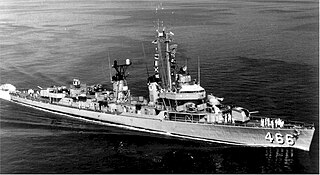
USS Waller (DD/DDE-466), a Fletcher-class destroyer, was a ship of the United States Navy named for Major General Littleton Waller, USMC (1856–1926).

USS Halligan (DD-584) was a Fletcher-class destroyer of the United States Navy, named for Rear Admiral John Halligan, Jr. (1876–1934).

USS Tillman (DD-641), a Gleaves-class destroyer, was the second ship of the United States Navy to be named for United States Senator Ben Tillman. In commission from 1942 to 1947, she saw service in World War II, primarily in the Atlantic and Mediterranean.
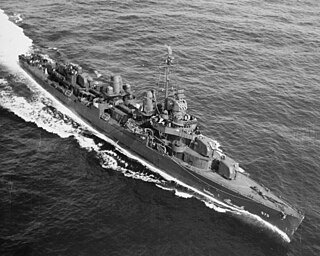
USS McKee (DD-575) was a Fletcher-class destroyer, the third ship of the United States Navy to be named for Lieutenant Hugh W. McKee.

USS Bryant (DD-665) was a Fletcher-class destroyer of the United States Navy, named for Rear Admiral Samuel W. Bryant (1877–1938).

USS Bisbee (PF-46) was a United States Navy Tacoma-class frigate in commission from 1944 to 1945 and from 1950 to 1951. She also served in the Soviet Navy as EK-17 and in the Colombian National Armada as ARC Capitán Tono.
The first USS Ogden (PF-39) was a Tacoma-class frigate in commission from 1943 to 1945. Originally classified as PG-137, she was the first ship of the United States Navy to be named for Ogden, Utah. She later served in the Soviet Navy as EK-10 and in the Japan Maritime Self-Defense Force as Kusu (PF-1), Kusu (PF-281), YAS-50 and YAC-22.
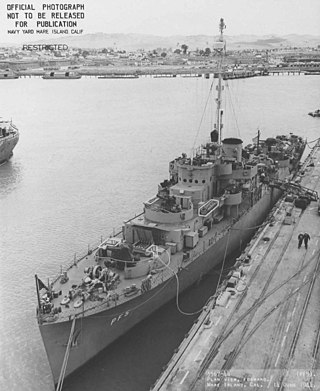
USS Hoquiam (PG-113/PF-5), a Tacoma-class patrol frigate in commission from 1944 to 1945 and from 1950 to 1951, she is the only ship of the United States Navy to be named for Hoquiam, Washington. She also served in the Soviet Navy as EK-13 and in the Republic of Korea Navy as ROKS Nae Tong (PF-65).

USS Van Buren (PG-150/PF-42), a Tacoma-class frigate patrol frigate, was the second ship of the United States Navy to hold this name. The first Van Buren, a revenue cutter, was named for President Martin Van Buren; the second Van Buren honors Van Buren, Arkansas.

The second USS Long Beach (PF-34) was a Tacoma-class frigate in commission from 1943 to 1945. She later served in the Soviet Navy as EK-2 and then in the Japan Maritime Self-Defense Force as Shii (PF-17) and Shii (PF-297) and YAS-44.
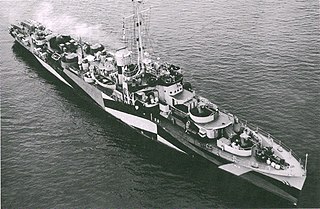
The second USS Gallup (PF-47), a Tacoma-class frigate in commission from 1944 to 1945 and from 1950 to 1951, was the first ship of the United States Navy to be named for Gallup, New Mexico. She also served in the Soviet Navy as EK-22 and in the Royal Thai Navy as HTMS Prasae.
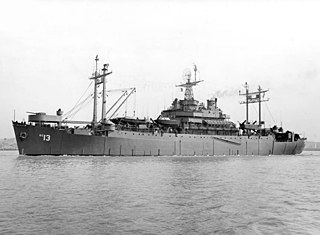
USS Panamint (AGC-13) was a Mount McKinley-class amphibious force command ship named after the Panamint Range of mountains in California. She was designed as an amphibious force flagship, a floating command post with advanced communications equipment and extensive combat information spaces to be used by the amphibious forces commander and landing force commander during large-scale operations.

USS Burlington (PF-51) was a Tacoma-class frigate in commission from 1944 to 1945 and from 1951 to 1952, the only United States Navy ship thus far to have been named for Burlington, Iowa. She also served in the Soviet Navy as EK-21 and in the Colombian National Armada as ARC Almirante Brión.

USS Kinzer (APD-91), ex-DE-232, was a United States Navy high-speed transport in commission from 1944 to 1946.
















